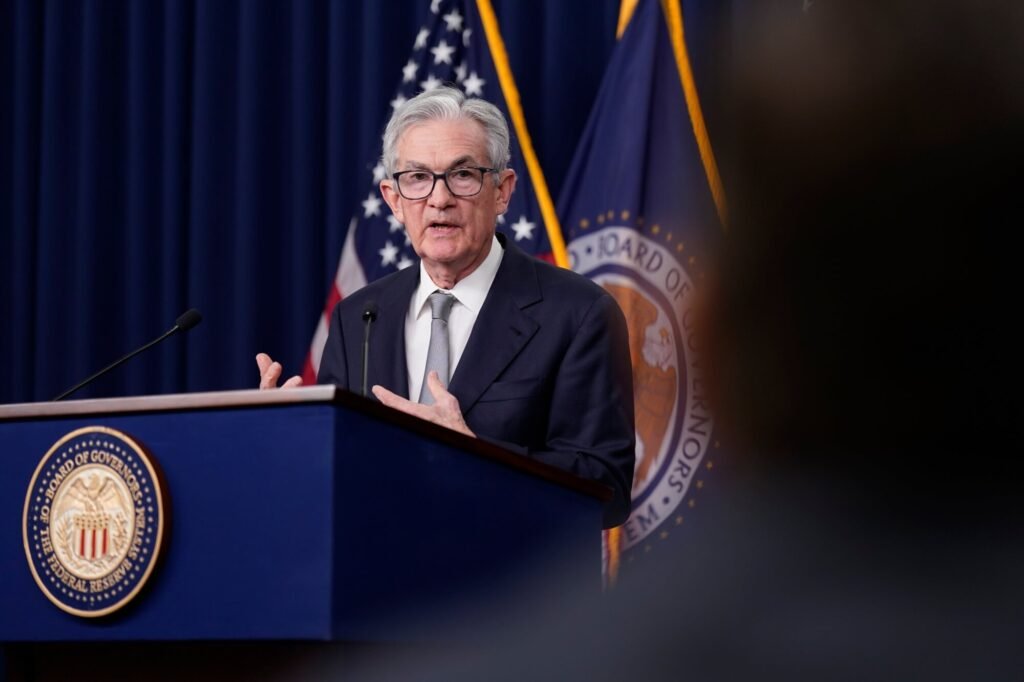This Content Is Only For Paid Member
The recent comments made by Jerome Powell, Chair of the Federal Reserve, regarding the role of Wall Street in controlling inflation have sparked a significant market reaction, highlighting the intricacies of Federal Reserve communication. Following the central bank’s decision to maintain interest rates, both stocks and Treasuries experienced gains, largely attributed to Powell’s acknowledgment of rising bond yields contributing to tighter financial conditions. This recognition potentially serves as a substitute for future interest rate hikes.
The yields on policy-sensitive two-year and longer-dated bonds, cited by Powell in his remarks, promptly declined after his statements. This has played a role in alleviating the recent turmoil in the Treasury market, which had reverberated throughout the global economy, affecting asset prices, putting pressure on homebuyers, and increasing the cost of doing business for corporations.

While the Federal Reserve has left room for potential policy adjustments due to robust economic growth, Powell suggested that elevated Treasury yields could serve as a means to maintain restrictive monetary conditions, curbing the inflationary pressures within this business cycle.
The challenge now facing Fed officials is that they may find themselves in a difficult position if financial conditions significantly ease, driven by expectations, perhaps fueled by Powell, that the central bank has concluded its aggressive tightening campaign. Bill Dudley, the former President of the New York Fed, noted that by adopting a supportive tone towards the markets, Powell inadvertently loosens financial conditions. This, in turn, weakens the impetus for avoiding further monetary policy tightening.
Leading up to the Federal Reserve’s decision, US yields had already been on the decline following the announcement of lower-than-expected security sales at quarterly refunding auctions and below-expectations data on US factory activity.
The Bloomberg US Financial Conditions Index, which gauges tightness in money, bond, and stock markets, has shown increasing restrictions for three consecutive months due to higher rates and a significant pullback in the S&P 500.
While Powell has kept the possibility of a December rate hike open, market participants have considered the Federal Open Market Committee’s view on the impact of “tighter financial and credit conditions on households and businesses,” which could weigh on economic activity, hiring, and inflation.
However, the challenge with incorporating financial conditions into the statement is their volatility, as highlighted by former Fed Vice Chair Richard Clarida. Policymakers may come to regret focusing on fluctuating market data. This dynamic market reaction to dovish statements could potentially incentivize a hawkish pushback, particularly if it persists.
Wall Street’s focus on the interaction between asset prices and the real economy is well-founded, as it influences the cost of funding for consumers and businesses, ultimately shaping demand. According to Standard Chartered, a more restrictive financial environment could subtract over a percentage point from baseline economic growth in the coming year.
The recent surge in mortgage, corporate, and Treasury yields, coupled with a strong US dollar and weaker equities, is expected to exert a drag on the US economy. The implications of this downside risk to growth may be underestimated, particularly if the rise in financial stability risks is not fully reflected in equity or corporate bond market movements, according to analysts at Standard Chartered.




